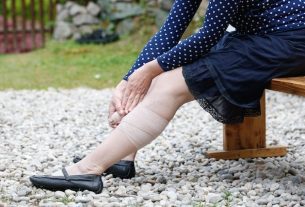Truvada is an antiretroviral indicated for the treatment of HIV infection or to prevent contamination with this virus in pre-exposure prophylaxis (PrEP).
This medicine contains emtricitabine and tenofovir disoproxil fumarate in its composition, which inhibit the reverse transcriptase enzyme, essential in the replication of the HIV virus. In this way, this medicine reduces the amount of HIV in the body, thus improving the immune system.
Truvada is offered free of charge by the SUS and must be used as recommended by the infectious disease specialist, who may also recommend other antiretrovirals for the treatment of HIV infection.

What is it for
Truvada is indicated for:
- Treatment of HIV-1 virus infectionwhich can be used in combination with other antiretrovirals, as recommended by the infectious disease specialist;
- Prevent HIV infection in people who are at high risk of contamination, such as partners of HIV-positive people, sex workers, diagnosed with sexually transmitted infections or people who frequently change partners or use injectable drugs.
To prevent HIV infection, the use of Truvada must be associated with using a condom in all intimate contact, and does not exclude other forms of HIV prevention.
How it works
Truvada has two substances in its composition, emtricitabine and tenofovir disoproxil fumarate, with antiretroviral action.
These substances act by inhibiting the HIV-1 reverse transcriptase enzyme, preventing it from multiplying.
Read too: HIV-1 and HIV-2: what they are and what are the differences
How to drink
Truvada should be taken orally, with a glass of water, before or after a meal.
Truvada doses are:
- Treatment of HIV-1 in adults: 1 tablet of Truvada, once a day;
- HIV prevention in adults and adolescents over 15 years of age and weighing 35 kg or more: 1 tablet of Truvada, once a day, for as long as you remain at risk of being infected by HIV-1.
The dose and duration of treatment with Truvada vary from one person to another and therefore must be recommended by an infectious disease specialist.
Read too: PEP (Post-Exposure Prophylaxis): what it is, what it is for and when to take it
Possible side effects
The most common side effects of Truvada are headache, dizziness, extreme tiredness, abnormal dreams, difficulty sleeping, nausea, vomiting, diarrhea.
In addition, stomach pain, gas, confusion, digestion problems, body swelling, dark spots on the skin, hives, redness and swelling of the skin, pain or itching of the skin may also occur.
Who shouldn’t use
Truvada should not be used by children and adolescents under 15 years of age and weighing less than 35 kg, or by people who are allergic to emtricitabine, tenofovir disoproxil fumarate or other components of the formula.
Furthermore, during pregnancy or if the person has kidney problems or diseases, liver diseases such as chronic hepatitis type B or C, overweight, diabetes, cholesterol or if they are over 65 years old, Truvada should only be used with guidance from the infectious disease specialist after evaluating the benefits and risks of the treatment.
Truvada should also not be used during breastfeeding, however, breastfeeding is not recommended for women who have HIV infection, due to the risk of transmitting the virus to the baby during breastfeeding.

Sign up for our newsletter and stay up to date with exclusive news
that can transform your routine!
Warning: Undefined array key "title" in /home/storelat/public_html/wp-content/plugins/link-whisper-premium/templates/frontend/related-posts.php on line 12
Warning: Undefined array key "title_tag" in /home/storelat/public_html/wp-content/plugins/link-whisper-premium/templates/frontend/related-posts.php on line 13



